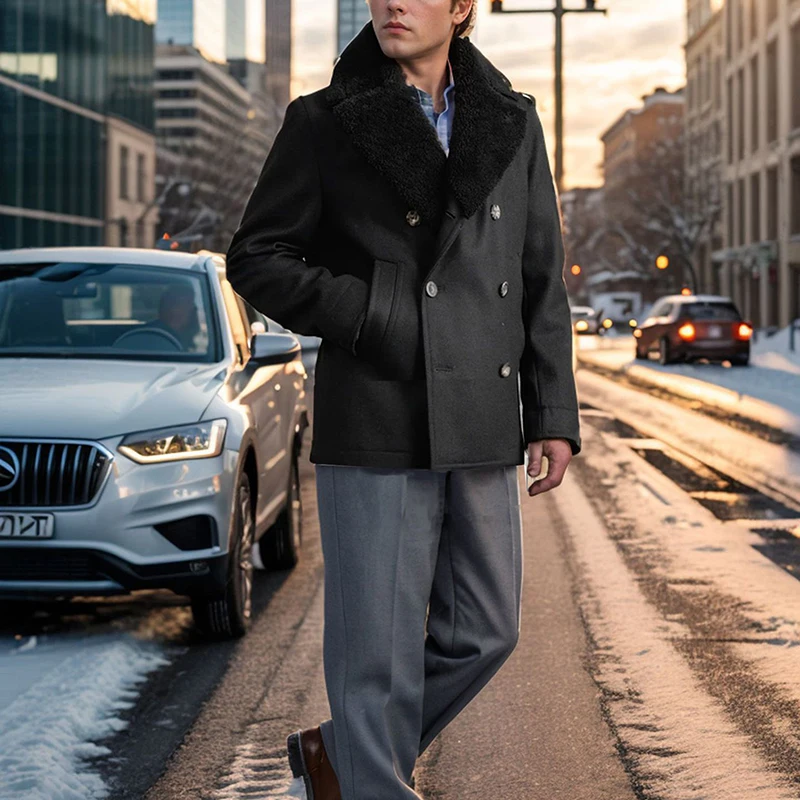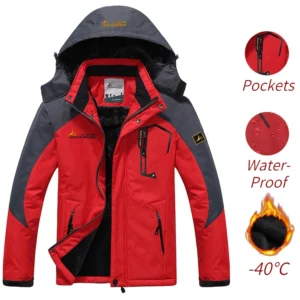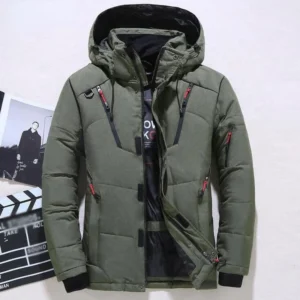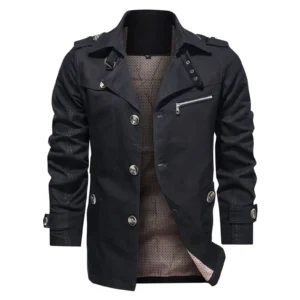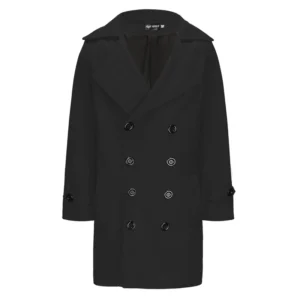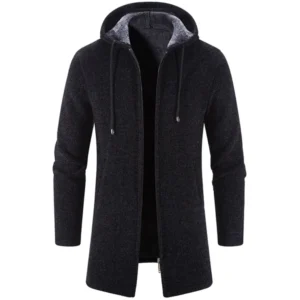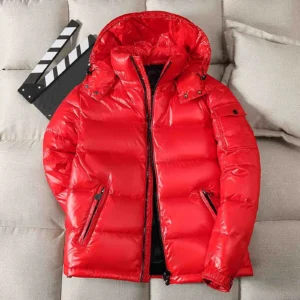The Enduring Appeal of Classic Fit Pea Coats
There’s something undeniably commanding about a well-crafted pea coat. With roots stretching back to the 1800s, these iconic coats were originally designed for naval personnel who needed protection from harsh sea elements. The sturdy wool construction and practical design made them essential for sailors facing bitter winds and sea spray. Today, the classic fit pea coat maintains this heritage while standing as a cornerstone of men’s winter fashion.
What exactly makes a fit “classic”? Unlike more contemporary slim or relaxed fits, a classic fit pea coat offers a balanced silhouette with room through the chest and shoulders. This traditional cut provides comfortable space for movement without appearing oversized or boxy. The straight lines and structured shape create a masculine silhouette that flatters diverse body types while maintaining the coat’s original naval character.
This enduring style has remained popular for good reason. Classic fit men’s pea coats offer unmatched versatility, transitioning seamlessly from casual weekend wear to business settings. The roomier cut allows for comfortable layering over suits or sweaters during colder months without restriction. Unlike trendier cuts that come and go, the classic fit pea coat represents a timeless investment that stays relevant season after season.
From Hollywood icons to everyday style leaders, the classic pea coat has adorned the shoulders of men seeking both warmth and sophistication. Its appeal crosses age groups and style preferences, offering a rare combination of practicality and refined appearance. In this comprehensive guide, we’ll explore everything you need to know about selecting, fitting, and styling the perfect classic fit pea coat for your wardrobe.
The History and Evolution of the Pea Coat
The story of the pea coat begins on the high seas, where function dictated form in the most practical ways. Originally developed for naval use in the early 1800s, these coats first appeared in the Dutch and British navies before becoming standard issue for many seafaring nations. The name itself comes from the Dutch word “pij,” referring to the coarse wool fabric used in their construction.
Early naval pea coats were crafted from heavy 32-ounce Melton wool – a dense, water-resistant material capable of withstanding the punishing conditions at sea. The double-breasted design provided an additional layer of protection across the chest, while the high collar could be turned up against wind and spray. Large buttons, often made of wood, bone, or later metal, were specifically designed to be manipulated with cold or gloved hands.
The transition from military uniform to civilian fashion began in earnest after World War II, when surplus military clothing entered the consumer market. The public quickly recognized the practicality and handsome appearance of these well-designed garments. Despite this civilian adoption, the classic fit of the pea coat remained remarkably true to its naval origins.
While modern fashion has introduced various interpretations – including slim fits and extended lengths – authentic men’s double-breasted pea coats maintain many original design elements. The hallmark features include a straight silhouette with room for layers beneath, broad lapels that can button at the neck, and sufficient length to protect against the elements while allowing free movement.
What sets traditional naval pea coats apart was their purposeful engineering. Unlike fashion-forward variations that might sacrifice function for style, military-issue pea coats were created with performance as the priority. The classic fit was intentional – providing enough room for movement while rowing or climbing ship rigging, yet fitted enough to prevent dangerous snagging on equipment. This practical heritage explains why the classic fit continues to resonate with modern men seeking both style and functionality.
Defining the Classic Fit Pea Coat
When we talk about “classic fit” in the context of pea coats, we’re describing a specific silhouette that balances comfort with structure. Unlike contemporary interpretations, a true classic fit pea coat offers a straight, clean line through the body with sufficient room in the shoulders and chest to accommodate layers without appearing oversized.
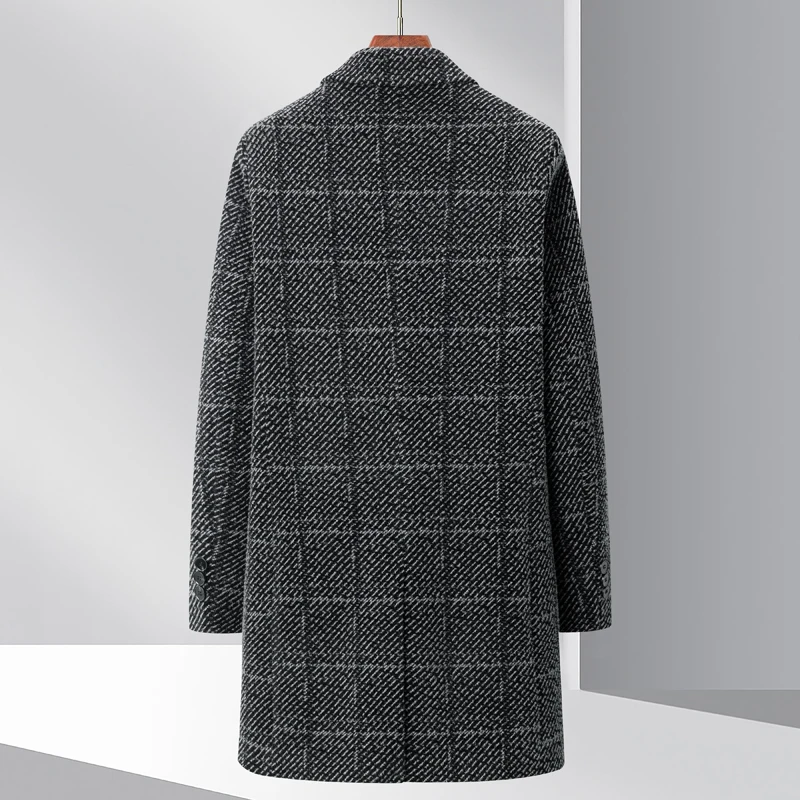
The classic fit is distinguished by several key characteristics:
- Shoulders that extend naturally to or slightly beyond your actual shoulder point
- Chest circumference allowing approximately 4-6 inches of room beyond your chest measurement
- Straight side seams that don’t taper dramatically at the waist
- Sleeve width that permits comfortable movement and layering
- Length typically hitting at the hip or just below
This traditional silhouette differs significantly from other common fits found in today’s market. Slim fit pea coats feature narrower shoulders, a tapered waist, and generally less room throughout, creating a more contemporary appearance but sacrificing some of the original functionality. Modern fit options represent a middle ground, with slightly more shape than classic but not as restrictive as slim. Relaxed or oversized fits, meanwhile, feature exaggerated proportions that deviate from the coat’s naval heritage.
The practical benefits of classic fit extend beyond aesthetics. This traditional cut allows for comfortable layering during cold weather – whether you’re wearing a simple sweater or a full suit underneath. The roomier chest and armholes provide greater range of motion, harkening back to the coat’s origins when sailors needed freedom to perform physical tasks. This functional design makes the classic fit particularly well-suited for active winter wear.
Body type plays an important role in how a classic fit pea coat will look. This universal silhouette tends to flatter most physiques, but it particularly complements athletic builds by highlighting broader shoulders. For slimmer individuals, the straight lines add some visual substance, while those with fuller figures appreciate the comfortable proportions and flattering structure without excessive fabric. Understanding your coat length style can further enhance the overall proportions for your specific body type.
The right coat length for every body type will ensure the classic fit achieves its intended effect. When properly sized, a classic fit pea coat should provide a commanding presence without restricting movement – the very qualities that made it essential for naval personnel and desirable for civilian wear.
Key Features of an Authentic Classic Fit Pea Coat
An authentic classic fit pea coat is defined by specific design elements that have remained largely unchanged for generations. Understanding these key features helps distinguish quality garments that honor the coat’s rich heritage:
Double-Breasted Front: The most recognizable feature is the double-breasted closure with two parallel columns of buttons. Traditional naval pea coats typically feature 6-8 buttons in total, with the top row functional but often left unbuttoned for comfort. This overlapping front panel provides exceptional wind resistance – a feature originally designed for protection at sea.
Button Design and Placement: Authentic pea coats historically featured buttons made from materials like bone or wood before transitioning to metal. Many quality coats still incorporate anchor-emblazoned metal buttons as a nod to naval origins. The button spacing is calculated to create a balanced appearance while ensuring proper closure.
Broad Lapels and Ulster Collar: The wide lapels flow into a substantial collar known as an “Ulster” style. This convertible collar can be turned up and fastened across the neck during inclement weather, creating protection similar to a scarf. The generous proportions of this collar serve both functional and aesthetic purposes.
Structured Shoulders: Classic fit pea coats feature slightly structured shoulders that maintain their shape without excessive padding. This clean shoulder line creates the coat’s distinctive silhouette while providing enough room for comfortable movement.
Traditional Pockets: Authentic designs include either vertical “slash” hand-warmer pockets or flap pockets positioned at the hip. These pockets are typically reinforced for durability and placed at a practical height for both hand warming and item storage.
Back Details: Traditional pea coats feature either a center vent or no vent at all. The center back often includes a half-belt detail on more authentic designs – a feature that allowed sailors to achieve a more customized fit.
Standard Length: The definitive full coat length of a classic pea coat typically hits at the hip or just below – approximately 30-32 inches for an average-height man. This length was intentionally designed to provide protection without restricting leg movement during active duties.
Cuff Design: Traditional cuff designs are simple and functional, often featuring a plain hem or small vent rather than decorative buttons or straps. This clean finish reflects the coat’s military origins where practicality was paramount.
The materials used in creating pea coats are equally important to their authentic appearance. Traditional wool pea coats were crafted from heavy melton or kersey wool that provided exceptional warmth and water resistance. This combination of specific design elements and quality materials creates the distinctive presence that has made classic fit pea coats enduring wardrobe staples.
Premium Materials: What Makes a Quality Classic Fit Pea Coat
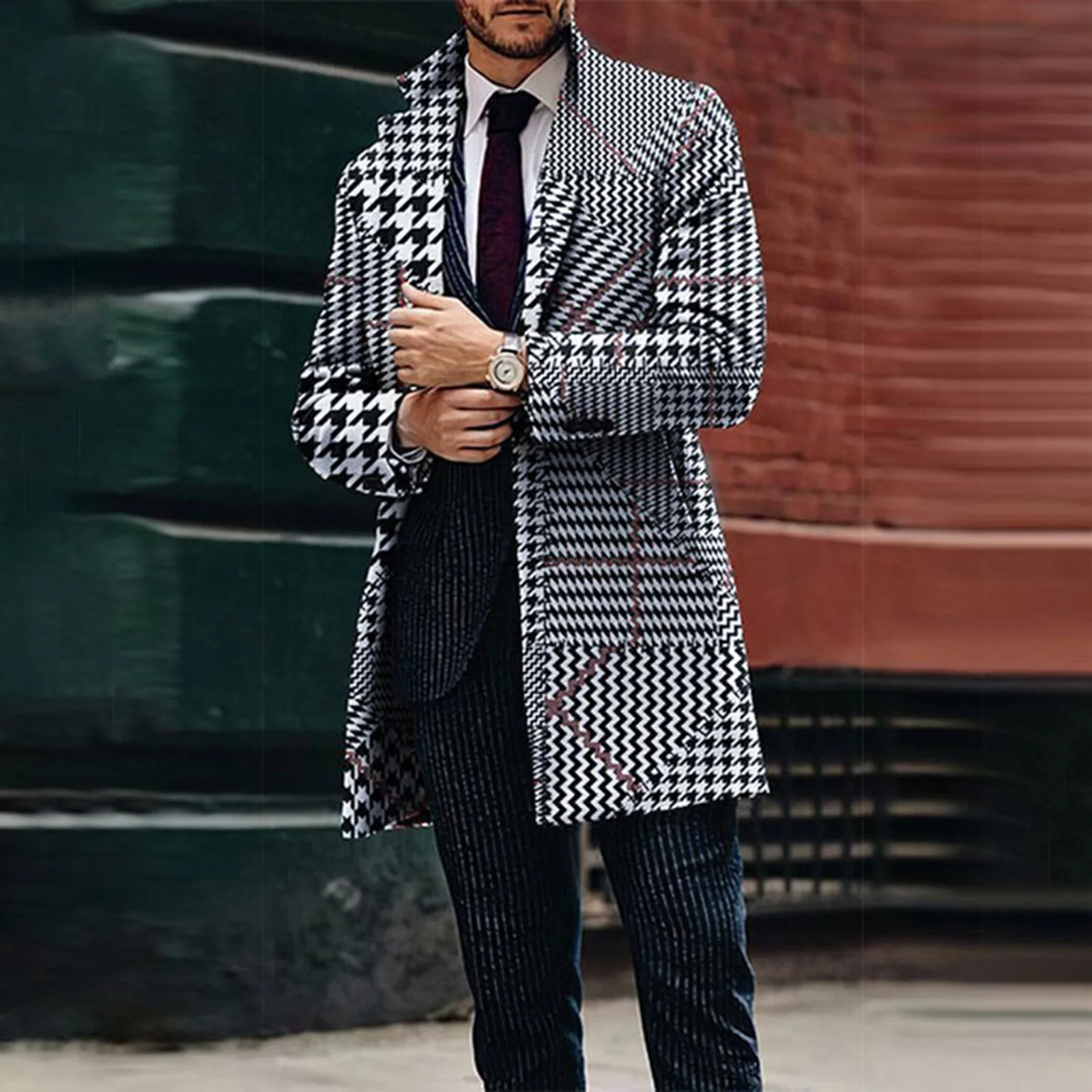
The foundation of any exceptional pea coat lies in its materials. Traditional naval pea coats were constructed from dense, heavy wool that could withstand punishing conditions at sea. These original specifications continue to guide quality standards today, though modern innovations have introduced new options.
Wool Types and Quality
Authentic pea coats historically utilized specific wool varieties:
Melton Wool: Dense, heavily fulled wool with a smooth surface that excels at blocking wind and resisting water. Traditional naval coats used 32-ounce Melton, though modern versions typically range from 24-32 ounces.
Kersey Wool: Slightly coarser than Melton but exceptionally durable with excellent insulation properties. The diagonal twill weave creates a distinctive texture.
Beaver Cloth: Premium wool featuring a short, raised nap that provides exceptional softness while maintaining durability and warmth.
Today’s market offers additional options, including wool blend coats that incorporate synthetic fibers for added performance or cashmere blends for luxury. While purists may prefer 100% wool for authenticity, quality blends can offer advantages like improved wrinkle resistance or reduced weight without compromising warmth.
Weight Matters
The weight of wool (measured in ounces per yard) directly impacts a pea coat’s performance. Heavier weights (28-32 oz) provide superior warmth and wind resistance but can feel bulky. Mid-weight options (24-28 oz) balance warmth with comfort for most climates. The weight significantly affects how the coat drapes – heavier wools create the structured, commanding silhouette characteristic of authentic pea coats.
Lining Materials
While the outer shell receives most attention, lining materials significantly impact comfort and durability:
- Satin or Twill: Smooth linings that facilitate easy wearing over layers
- Flannel or Quilted Linings: Enhanced insulation for extreme cold
- Partial Linings: Allow greater breathability while protecting key areas
Premium coats often feature special details like collar felts (soft fabric under the collar), interior chest pockets, and wind guards behind front closures. These refinements, while sometimes invisible from outside, distinguish exceptional garments from basic options.
The quality of materials directly impacts how a classic fit pea coat performs over time. Premium wool coats develop character with wear rather than simply wearing out. The natural resilience of quality wool means the coat maintains its shape season after season, with the fabric actually conforming better to your body over years of use. This longevity transforms a pea coat from simple outerwear into a long-term investment piece that can serve for decades with proper care.
Construction Details: Hallmarks of Superior Craftsmanship
Beyond materials, construction techniques determine whether a pea coat will last years or generations. These often-overlooked details separate investment-worthy garments from disposable fashion.
Seam Construction
Quality pea coats feature fully-felled seams where edges are tucked under and double-stitched, creating greater strength and a cleaner interior finish. Stress points – particularly underarms and pocket openings – should show reinforced stitching to prevent tearing. Examine seams for tight, even stitching with approximately 8-12 stitches per inch, indicating precision craftsmanship.
Button Attachment
Superior coats secure buttons using a “shank” method where buttons attach with a small thread column creating space between button and fabric. This technique accommodates the thick wool and prevents stress on the fabric when buttoned. Quality buttons should be secured with reinforced cross-stitching and backing to prevent pulling through the fabric over time.
Collar and Lapel Construction
The collar and lapels are defining features of a pea coat. Premium construction includes proper interlining – a layer of canvas or fusible material that provides structure without stiffness. Quality lapels show a gentle “roll” rather than lying completely flat, created through careful hand-pressing and interior construction. The collar should stand properly when raised, indicating correct cutting and shaping.
Pocket Construction
Examine pocket construction for reinforced corners and clean finishing. Quality coats feature pocket bags constructed from durable materials rather than flimsy linings that quickly tear. The interior edges should be bound or finished to prevent fraying, and the pocket openings should include reinforcement to maintain shape despite regular use.
Interior Finishing
The interior reveals much about a coat’s quality. Look for bound seams where raw edges are completely enclosed to prevent fraying. Premium coats often feature a “floating” lining attached at strategic points rather than fully fused, allowing natural movement between shell and lining. Interior pockets should be securely anchored to the coat’s structure, not merely attached to the lining.
Hand-Finished Elements
Many superior pea coats incorporate hand-finished elements where machine work can’t achieve the same result. This includes hand-sewn collar points, hand-worked buttonholes that resist fraying, and hand-attached linings at critical junctures. These labor-intensive touches contribute to both aesthetics and longevity.
Understanding these construction details helps when comparing options in the ultimate guide to men’s double-breasted coats. While some quality indicators remain hidden inside the garment, they dramatically impact how the coat performs over time. A well-constructed classic fit pea coat maintains its shape through years of wear, with the wool conforming to your body while the structure remains intact – creating a truly personalized garment that improves with age.
Finding Your Perfect Fit: A Comprehensive Sizing Guide
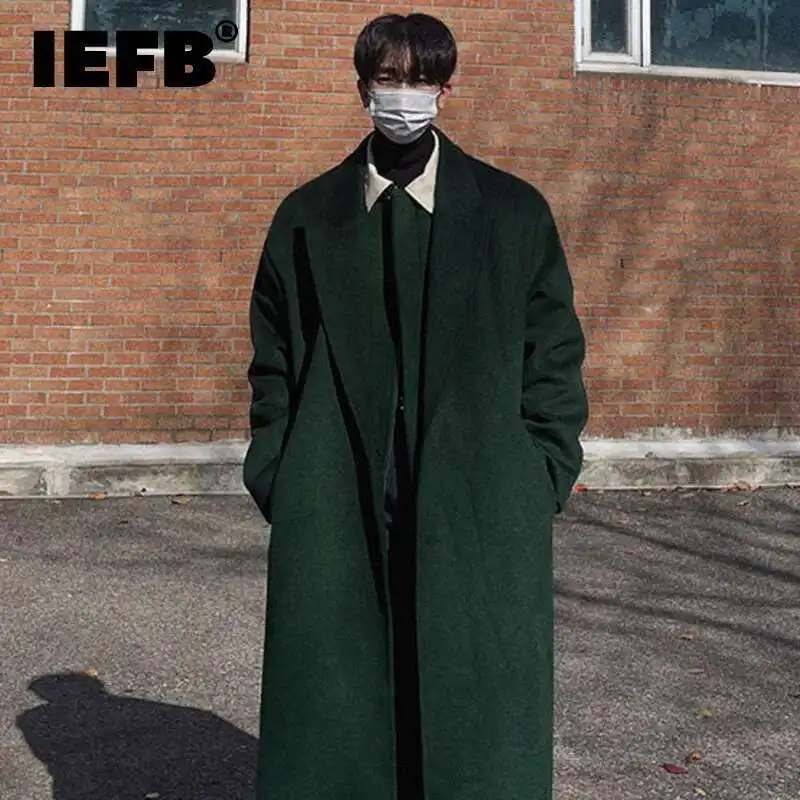
Achieving the perfect fit in a classic pea coat requires understanding how this traditional garment should sit on your body. Unlike more fitted modern styles, the classic fit allows room for layering while maintaining a clean silhouette.
Key Fit Points
Shoulders: The shoulder seam should align with or extend slightly beyond your natural shoulder point. The shoulder should lie flat without bunching or pulling.
Chest: When buttoned, you should have approximately 4-6 inches of room in the chest. You should be able to comfortably fit a fist between your chest and the buttoned coat.
Sleeve Length: Sleeves should end at the wrist bone or slightly below, allowing about ¼ inch of shirt cuff to show when arms are extended.
Overall Length: Traditional pea coats hit at the hip or just below – understanding the perfect coat length for height is essential for balanced proportions.
Collar Fit: When fully buttoned, the collar should close comfortably around your neck without gapping or constricting.
Measuring Guide for Online Orders
Chest: Measure at the fullest part of your chest, keeping the tape horizontal and slightly relaxed.
Shoulders: Measure from one shoulder point to the other, across your upper back.
Sleeves: Measure from shoulder seam to just below your wrist bone.
Length: Measure from the base of your collar to where you want the coat to end (typically hip level).
Add 4-6 inches to your chest measurement for classic fit. When between sizes, consider your layering needs – size up if you’ll regularly wear thick sweaters or suits underneath.
Common Fit Issues and Solutions
| Fit Issue | Potential Cause | Solution |
|---|---|---|
| Shoulder pulling | Too small | Size up or try different brand |
| Excess fabric at waist | Too large or wrong cut | Size down or consider slight tailoring |
| Limited arm movement | Armholes too small | Size up or look for coat with more generous cut |
| Collar gaps when buttoned | Chest too tight | Size up or try different brand |
| Sleeves too long | Proportions off | Consider brands with different sleeve ratios or budget for alterations |
Body Type Considerations
Different body types require specific attention when selecting a classic fit pea coat:
Athletic Build: Standard classic fit typically works well, emphasizing broader shoulders naturally.
Slender Build: Ensure shoulders aren’t too extended; some classic fits might appear oversized.
Fuller Build: Look for clean lines without excessive fabric; proper length is crucial for balanced proportions.
Understanding what length coat makes you taller can be particularly useful for those looking to optimize their silhouette. The right proportions can visually adjust height, creating a more balanced overall appearance.
Remember that proper layering is essential to the functionality of a classic fit pea coat. Allow room for a sweater or suit jacket underneath without compromising the coat’s clean lines. When trying on pea coats, wear similar layers to what you’ll typically pair with the coat to ensure accurate fit assessment.
Our Selection Criteria: How We Choose the Best Classic Fit Pea Coats
At Metro Cloak, our recommendations for classic fit pea coats stem from a comprehensive evaluation process that prioritizes authenticity, quality, and value. We believe that a truly exceptional pea coat should honor its naval heritage while meeting modern expectations for comfort and style.
Our assessment begins with design authenticity. We verify that each coat maintains true classic fit proportions rather than mislabeled slim or modern cuts. This includes proper chest room, shoulder width, and traditional length. We specifically look for double-breasted fronts with correct button placement and authentic collar designs that reflect the garment’s historical roots.
Material evaluation forms the second pillar of our selection process. We prioritize coats using premium wool with appropriate weight for serious weather protection. While we consider innovative blends, we maintain strict standards for warmth, durability, and appearance. Each recommended coat undergoes tactile assessment to ensure the fabric offers the substantial hand-feel expected from quality outerwear.
Construction quality receives equal scrutiny. Our team examines stitching consistency, seam strength, and internal finishing. We look for reinforced stress points, properly secured buttons, and durable linings. Each recommended coat has demonstrated superior craftsmanship that justifies its price point, regardless of budget category.
We balance these quality indicators against value considerations. Rather than simply recommending the most expensive options, we identify coats that deliver exceptional quality relative to their price. This approach ensures recommendations across various budget levels without compromising essential quality standards.
Finally, we consider practical performance. This includes weather resistance, comfort during extended wear, and versatility across different settings. The men’s coat length guide informs our assessment of appropriate proportions for different uses and body types. Each recommended coat has demonstrated excellence in real-world conditions, not just in appearance.
This rigorous evaluation process ensures our recommendations represent truly exceptional classic fit pea coats that will serve as worthy investments regardless of your budget level.
Curated Selection: Premium Classic Fit Pea Coats for Every Budget
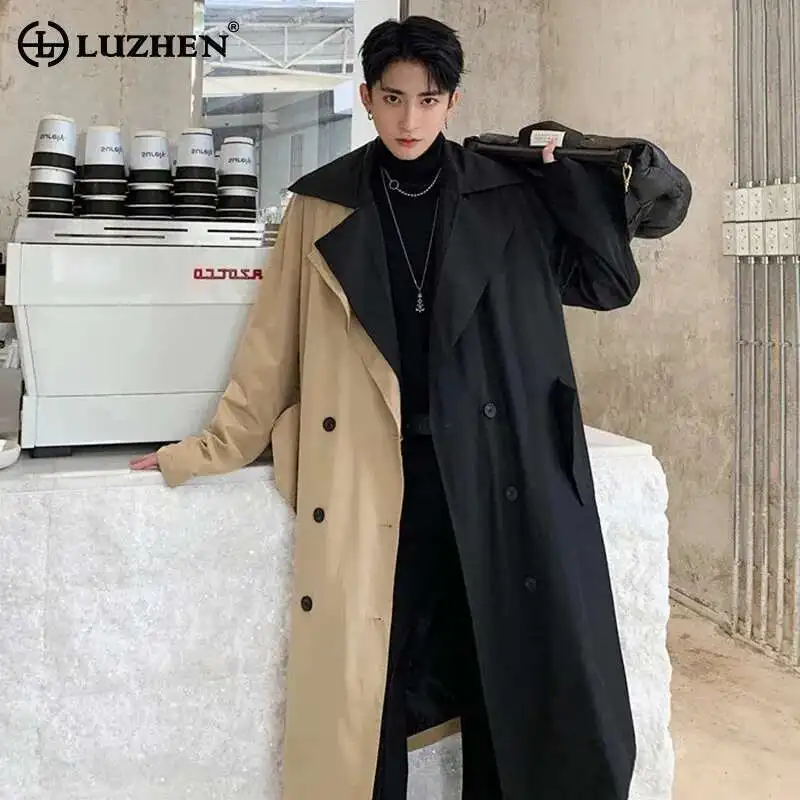
Mens Heavy Winter Coat, Mens Insulated Coat, Mens Parka Coat
Price range: $175.52 through $237.36 Select options This product has multiple variants. The options may be chosen on the product pageMens Big and Tall Winter Coats, Mens Down Coat, Mens Hooded Winter Coat, Mens Puffer Coat
Price range: $126.44 through $217.01 Select options This product has multiple variants. The options may be chosen on the product pageMens Big and Tall Winter Coats, Mens Hooded Winter Coat
Price range: $80.32 through $106.68 Select options This product has multiple variants. The options may be chosen on the product pageMens Double Breasted Pea Coat, Mens Wool Blend Coat, Mens Wool Pea Coat
Price range: $136.84 through $157.36 Select options This product has multiple variants. The options may be chosen on the product pageMens Cashmere Overcoat, Mens Hooded Winter Coat, Mens Wool Blend Coat
Price range: $128.72 through $139.68 Select options This product has multiple variants. The options may be chosen on the product pageMens Hooded Winter Coat, Mens Insulated Coat, Mens Puffer Coat, Mens Quilted Coat
Price range: $139.88 through $177.72 Select options This product has multiple variants. The options may be chosen on the product page
After extensive evaluation, we’ve identified exceptional classic fit pea coats across various price points, each delivering outstanding quality relative to its cost. These selections represent the finest options available for those seeking authentic design and superior construction.
Luxury Classic Fit Pea Coats
Premium pea coats in this category feature exceptional materials like 100% virgin wool from renowned mills, often with weights between 28-32 ounces for superior warmth and structure. Construction details include hand-finished elements like working buttonholes, hand-sewn collar points, and floating canvas construction. Distinctive features include genuine horn buttons, premium satin linings, and impeccable internal finishing. Expect perfect proportions with clean lines and proper drape that improves with age.
These investment pieces typically feature wool that develops character over decades rather than years, with construction techniques designed for generational longevity. The finest examples come from heritage manufacturers with specific naval tailoring expertise.
Mid-Range Quality Options
These excellent value propositions deliver many premium features at more accessible price points. Look for 100% wool construction in the 24-28 oz range, often with slight material compromises compared to luxury options but maintaining essential quality standards. Construction typically includes reinforced stress points, secure button attachment, and durable linings.
Mid-range coats generally offer authentic design elements including proper collar structure, traditional pocket placement, and correct classic fit proportions. The best examples in this category often come from established brands specializing in outerwear rather than fashion houses, focusing their resources on material quality rather than marketing.
Affordable Yet Authentic Options
Quality-conscious buyers with budget constraints can find worthy options that maintain core classic pea coat characteristics. These typically feature wool-blend constructions (usually 60-80% wool) that balance warmth and value. While construction may include more machine work than hand detailing, better options maintain reinforced stress points and clean finishing.
Key features to seek in this category include proper collar structure that stands when raised, secure button attachment, and clean interior finishing. The best affordable options prioritize proper fit and essential functionality over decorative elements.
Most Traditional/Authentic Designs
For purists seeking the most historically accurate pea coats, specific details matter. Look for authentic naval features like anchor buttons, correct 6-8 button configuration, and traditional back detailing. These coats typically feature higher wool content in darker navy shades with minimal modern adaptations.
Traditional designs generally include practical elements like throat latches, handwarmer pockets, and correct proportional details derived from naval specifications. The most authentic examples often come from manufacturers with military contract experience or heritage brands with naval connections.
Best for Extreme Cold Weather
Those facing serious winter conditions should consider specialized heavy-weight options. These feature dense 30-32 oz wool construction, often with windproof membranes or additional insulation layers. Enhanced weather protection comes from features like internal wind guards, extended collars, and reinforced closures.
The winter coats in this category maintain classic styling while incorporating technical elements for extreme conditions. Look for additional weather-resistant features like water-repellent treatments and secure closures that maintain protection in harsh environments.
Styling Your Classic Fit Pea Coat: Versatility for Every Occasion
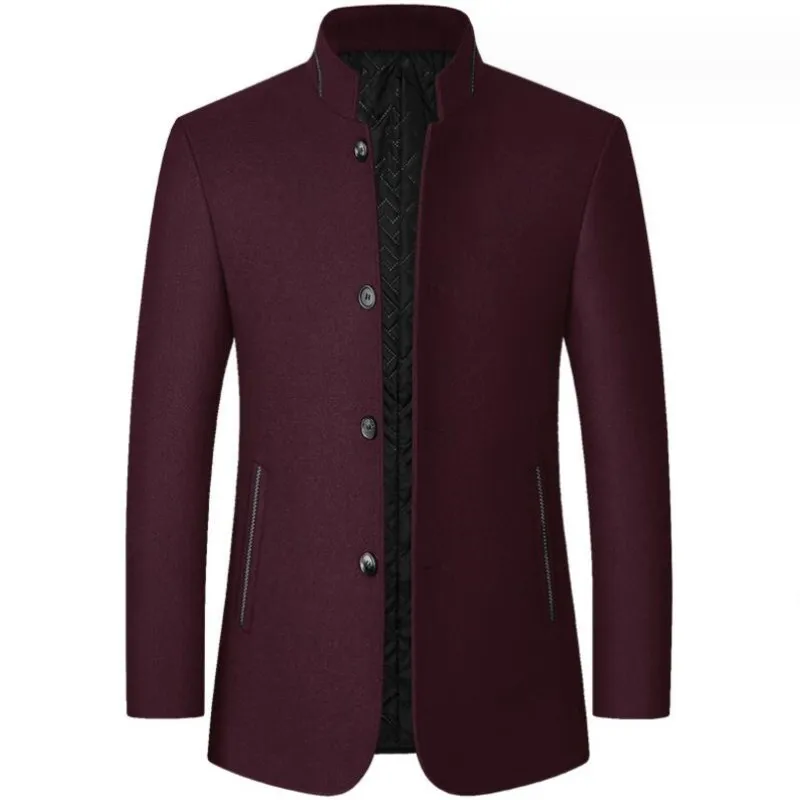
The classic fit pea coat stands out for its remarkable versatility, transitioning effortlessly between casual, business, and formal settings. This adaptability makes it an exceptional wardrobe investment that delivers value across multiple contexts.
Casual Styling
For everyday wear, pair your pea coat with:
– Dark wash jeans or chinos
– Lightweight sweaters or thermal henleys
– Casual button-downs with open collars
– Leather or suede boots
– Simple accessories like knit caps or leather gloves
This approach creates a polished yet relaxed look perfect for weekend outings or casual gatherings. The structured nature of the pea coat elevates even simple jeans-and-sweater combinations, lending them a deliberate, put-together quality.
Business Casual Interpretations
For office environments or professional settings:
– Wool trousers or khakis in complementary colors
– Oxford or poplin dress shirts
– Lightweight merino sweaters or vests
– Chelsea boots or leather dress shoes
– Refined accessories like merino scarves or leather gloves
This balanced approach leverages the coat’s military heritage to create authoritative yet approachable business casual looks. The clean lines of a classic fit pea coat naturally complement tailored pieces without the formality of a full topcoat.
Formal Styling Possibilities
For dressier occasions:
– Wear over suits in complementary colors (navy coat pairs well with gray or brown suits)
– Choose dress shirts with spread collars that harmonize with the pea coat’s broad lapels
– Add a tie in complementary texture (knit or wool ties work particularly well)
– Complete with polished dress shoes and minimal accessories
The structured nature of classic fit pea coats makes them suitable companions for tailored clothing, unlike more casual outerwear options. Understanding the differences between short and long coats helps determine which formal occasions best suit the pea coat versus a full-length overcoat.
Seasonal Adaptations
Adjust your pea coat styling across seasons:
– Early Fall: Layer over light sweaters or shirts alone
– Deep Winter: Add substantial knitwear, scarves, and gloves
– Spring Transition: Pair with lighter layers and brighter colors
Color Coordination Guidance
Traditional navy pea coats offer exceptional versatility, complementing nearly any color palette. When working with other pea coat colors:
– Black coats: Pair with grays, whites, and cool-toned accents
– Gray coats: Complement with blues, burgundies, and earth tones
– Brown/camel coats: Harmonize with creams, blues, and forest greens
Understanding the principles of choosing the right coat length enhances your styling options by ensuring appropriate proportions for different outfits and occasions. The traditional hip-length classic fit pea coat offers balanced proportions that work across various heights and body types.
This styling versatility represents one of the pea coat’s greatest strengths – few garments transition as seamlessly between casual and formal contexts while maintaining their distinctive character and practical functionality.
Expert Care Guide: Maintaining Your Pea Coat’s Longevity
A quality classic fit pea coat represents a significant investment that can provide decades of service when properly maintained. Following these care guidelines will ensure your coat retains its appearance and performance through years of wear.
Cleaning Recommendations
For routine maintenance:
– Brush your coat regularly with a soft-bristled clothes brush, working in one direction to remove surface dirt and debris
– Spot clean minor stains promptly using a damp cloth with minimal mild soap if necessary
– Allow wet coats to dry naturally at room temperature, never using direct heat
For more thorough cleaning:
– Dry clean only once per season unless heavily soiled
– Select cleaners experienced with wool outerwear
– Request minimal pressing to preserve the natural roll of the collar and lapels
– Consider specialty wool cleaners for valuable or vintage coats
Storage Solutions
Between wearing seasons:
– Clean thoroughly before storage to prevent moth attraction
– Use wide, structured hangers that support the shoulders
– Allow adequate breathing space in closets rather than compressing
– Consider breathable garment bags rather than plastic covers
– Add cedar blocks or lavender sachets as natural moth deterrents
– Store in cool, dry locations away from direct sunlight
Addressing Common Issues
For pilling:
– Remove pills carefully with a fabric shaver on the lowest setting
– Consider professional de-pilling for valuable coats
For minor damage:
– Address small tears or loose buttons immediately before they worsen
– Save spare buttons (usually provided) for future replacements
– Use professional mending services for structural repairs
Weatherproofing Treatments
To enhance weather resistance:
– Consider professional application of wool-specific water repellent
– Avoid DIY sprays unless specifically formulated for wool outerwear
– Reapply treatments annually for coats frequently exposed to precipitation
Refreshing Appearance
To maintain a fresh appearance:
– Use a clothing steamer rather than iron for removing wrinkles
– Employ a lint roller before and after wearing
– Consider professional pressing once per season if needed
With proper care, quality wool pea coats develop character rather than simply wearing out. The natural resilience of wool means the fabric actually improves with proper wear, conforming to your body and developing a distinctive patina that enhances its appearance. Understanding proper winter coat length and fit helps maintain the coat’s intended silhouette throughout its lifetime.
Most quality pea coats can provide 10-20 years of regular service with appropriate maintenance, with exceptional examples lasting generations. This longevity transforms a seemingly simple purchase into a long-term investment in both style and functionality.
Are Classic Fit Pea Coats Still in Style?
Classic fit pea coats occupy a unique position in menswear as truly timeless garments that transcend typical fashion cycles. Unlike trendy outerwear that quickly appears dated, the authentic pea coat silhouette has remained relevant for over a century, demonstrating remarkable staying power in an industry defined by constant change.
The enduring appeal of classic fit pea coats stems from their perfect balance of heritage and functionality. The silhouette hasn’t required radical reinvention because the original design so effectively serves its purpose – providing warmth, protection, and masculine style in a versatile package. While other coat styles have undergone dramatic reinterpretations to remain relevant, the classic pea coat continues to be produced in forms remarkably similar to their naval predecessors.
This timelessness contrasts sharply with the trend cycles affecting other coat fits. Slim-fit variations gained popularity during the 2010s but have since given way to more relaxed silhouettes. Oversized interpretations emerge periodically but typically represent temporary fashion statements rather than enduring standards. Through these fluctuations, the classic fit remains a constant reference point – the standard against which variations are measured.
Contemporary fashion regularly incorporates classic pea coats in current styling, demonstrating their ongoing relevance. Fashion editorials, runway presentations, and street style photography consistently feature these coats paired with both traditional and modern elements. This persistent inclusion confirms that classic fit pea coats remain not merely acceptable but actively desirable components of current menswear.
The relationship between height and coat proportion remains an important consideration, with coat length for shorter men being particularly relevant. The traditional hip-length proportion of classic pea coats makes them flattering for diverse heights, contributing to their enduring appeal across different body types.
Rather than questioning whether classic fit pea coats remain in style, it’s more accurate to recognize them as style fundamentals that exist somewhat outside typical fashion cycles. Their consistent presence represents not a temporary trend but a permanent fixture in the menswear landscape – an enduring standard that rewards investment regardless of seasonal fashion shifts.
How Does Classic Fit Compare to Modern and Slim Fit Pea Coats?
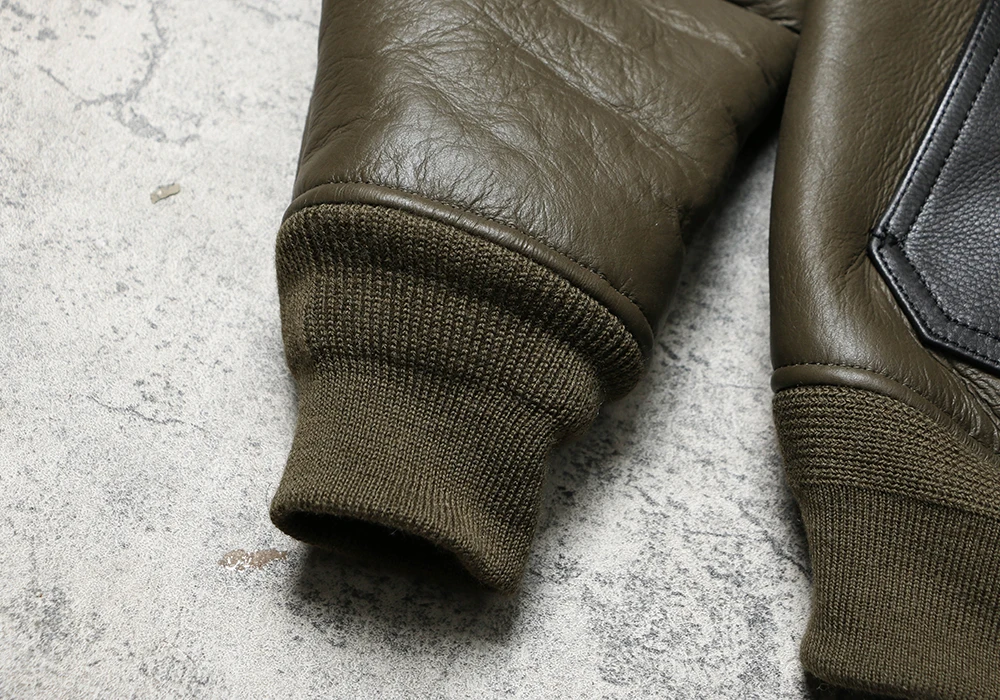
Understanding the distinct characteristics of different pea coat fits helps identify which variation best serves your needs and preferences. While all share common heritage elements, the fit dramatically affects both appearance and functionality.
| Feature | Classic Fit | Modern Fit | Slim Fit |
|---|---|---|---|
| Shoulder Width | Extends to or slightly beyond natural shoulder | Aligns with natural shoulder | Sits at or slightly inside natural shoulder |
| Chest Room | 4-6 inches beyond chest measurement | 3-4 inches beyond chest measurement | 1-3 inches beyond chest measurement |
| Waist Suppression | Minimal | Moderate | Significant |
| Armhole Size | Generous | Medium | Smaller, higher placement |
| Overall Silhouette | Straight, traditional | Slightly tapered | Significantly tapered |
| Layering Capacity | Excellent (suits, thick sweaters) | Good (light sweaters, shirts) | Limited (thin layers only) |
| Historical Accuracy | High | Moderate | Low |
Body Type Considerations
Different fits complement various body types:
Classic Fit:
– Universally flattering but particularly complements athletic builds
– Provides balanced proportions for larger frames
– Adds substance to slimmer physiques
Modern Fit:
– Well-suited to average builds
– Provides some shape for straight body types
– Accommodates moderate layering needs
Slim Fit:
– Complements lean body types
– Can appear restrictive on athletic or larger frames
– Emphasizes a contemporary aesthetic
Styling Differences
Each fit lends itself to different styling approaches:
Classic Fit:
– Excels with both casual and formal attire
– Accommodates suits and bulkier layers easily
– Projects traditional masculine authority
Modern Fit:
– Versatile for business casual environments
– Balances traditional and contemporary styling
– Works well with medium-weight layers
Slim Fit:
– Pairs effectively with sleek, contemporary clothing
– Creates a more fashion-forward silhouette
– Best suited for mild weather or limited layering
Occasion Appropriateness
Different occasions may call for different fits:
Classic Fit:
– Suitable for formal business settings
– Appropriate for traditional environments
– Practical for harsh weather requiring layers
Modern Fit:
– Versatile across most settings
– Balances professionalism and contemporary style
– Adaptable to various social contexts
Slim Fit:
– Well-suited to creative or casual professional environments
– Appropriate for social settings emphasizing fashion-forward appearance
– Less practical for extreme weather conditions
When evaluating different pea coat fits, consider both your aesthetic preferences and practical needs. The classic fit offers superior versatility and authentic heritage appeal, while modern and slim fits provide more contemporary silhouettes that may better align with certain wardrobes or style preferences.
Is a Classic Fit Pea Coat Suitable for Formal Occasions?
The classic fit pea coat occupies an interesting position in the formality spectrum – more structured than casual outerwear like bombers or parkas, yet slightly less formal than traditional overcoats. This unique standing makes it remarkably versatile across various settings, including many formal occasions.
For business formal contexts, the classic fit pea coat pairs exceptionally well with suits, particularly in traditional navy or black wool. The structured shoulders and clean lines complement tailored clothing without disrupting the formal silhouette. When worn over suits, the pea coat’s slightly shorter length allows glimpses of the suit jacket beneath, maintaining a cohesive formal appearance. This combination works particularly well for daily business wear, client meetings, and professional events.
For evening formal occasions, the appropriateness depends on the specific event. While black tie events traditionally call for longer overcoats, modern interpretations of formal dress often incorporate the pea coat for less stringent occasions. The key to elevating a pea coat for evening events lies in the details – a darker color palette, immaculate condition, and refined accessories all contribute to a more formal presentation.
Color selection significantly impacts formality. Navy and black pea coats naturally project greater formality than lighter or more casual colors like camel or gray. For maximum versatility between formal and casual settings, navy remains the optimal choice, honoring the coat’s naval heritage while providing appropriate sophistication for elevated occasions.
Styling choices can further enhance formality:
– Keeping all buttons fastened creates a more structured, formal appearance
– Adding a dress scarf in silk or fine wool elevates the overall impression
– Ensuring pristine condition with regular brushing and pressing
– Pairing with leather gloves rather than casual knit options
When considering overcoats versus pea coats for formal settings, the context and local customs matter significantly. In some regions and industries, the pea coat has been fully embraced as appropriate formal outerwear, while more traditional environments might still prefer full-length overcoats for the most formal occasions.
The classic fit pea coat demonstrates remarkable adaptability across the formality spectrum – equally at home over jeans for weekend wear or layered over suits for professional settings. This versatility represents one of its greatest strengths, allowing it to serve multiple roles within a well-considered wardrobe.
What’s the Difference Between Authentic Naval Pea Coats and Modern Interpretations?
The distinction between authentic naval pea coats and contemporary interpretations reveals much about the evolution of this iconic garment. While modern versions retain many visual cues from their military predecessors, significant differences exist in specifications, construction, and functionality.
Authentic naval pea coats were engineered to specific military requirements rather than fashion considerations. Original specifications typically included:
– Heavy 32-ounce Melton wool capable of retaining warmth when wet
– Dense weave providing significant wind resistance
– Double-breasted design with 8-10 buttons (including internal anchor buttons)
– Broad collar capable of protecting the entire neck and lower face
– Hip-length cut allowing mobility for shipboard tasks
– Corded button holes reinforced for durability
– Simple lining focused on function rather than appearance
Modern interpretations, even quality ones, typically modify these specifications for contemporary preferences and production efficiencies:
– Lighter wool weights (18-24 ounces being common)
– Simplified interior construction
– Reduced button count (often 6 visible buttons)
– Slimmer collars with more emphasis on appearance than protection
– Various length interpretations beyond traditional hip-length
– Machine-finished details replacing hand work
– Decorative linings and interior details
The craftsmanship approach differs significantly as well. Vintage military-issue pea coats were constructed for durability under extreme conditions, with reinforced stress points, extended interior facing for structure, and minimal decorative elements. Contemporary versions, even at premium price points, often emphasize appearance over extreme durability.
Material sourcing represents another key difference. Original naval pea coats utilized wool specifically selected and tested for maritime conditions. Many modern versions prioritize softness and drape over weather resistance, resulting in coats that look similar but perform differently in challenging conditions.
For those seeking authenticity, vintage military surplus can provide the most genuine experience, though sizing and condition issues present challenges. Among new production, some heritage manufacturers maintain closer adherence to original specifications, particularly those with histories of military contracts.
For shorter individuals, understanding the best coat length for short men is particularly relevant when comparing authentic naval designs to modern interpretations, as proportions can significantly impact the overall appearance.
This evolution doesn’t necessarily diminish the value of quality modern interpretations – they simply serve different purposes. Contemporary pea coats offer familiar visual appeal with adaptations for current preferences, while authentic naval specifications prioritize functional performance in extreme conditions. The best choice depends on whether you prioritize historical authenticity, contemporary styling, or specific performance characteristics.

